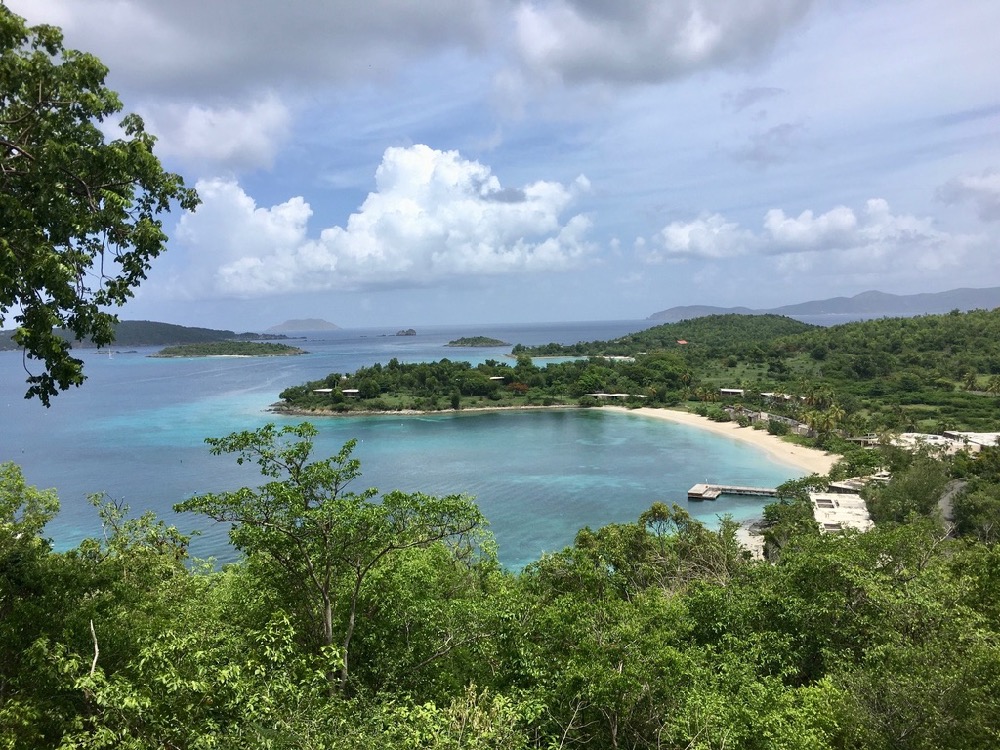
The National Park Service wants to hear from you.
What do you think should happen with Caneel Bay Resort, the 150-acre property that has operated as a luxury hotel within the Virgin Islands National Park since Dec. 1, 1956?
The discussion on Caneel’s future will continue at noon, Saturday, during a forum that will air on WTJX Channel 12.
The resort reigned as the premier destination on St. John until Hurricane Irma devastated much of the property in 2017. In the aftermath of the storm, the leaseholder of the property, CBI Acquisitions, has delayed any significant rebuilding efforts. The reasons, which are complex, are explained in this 2018 article.
The lease to that property (known as a Retained Use Estate, or RUE) is set to expire in 2023, and now the National Park Service wants to hear from the public, particularly Virgin Islanders and ancestral St. Johnians, on what they’d like to see in the future.
The Park Service began its listening process on Thursday evening with a two-hour virtual community meeting. Almost 100 people participated, sharing their views on what opportunities exist to promote the wide-ranging economic benefit and social justice while protecting the site’s valuable natural and cultural resources.
Those who missed that meeting can share their views until May 7 through the following three methods:
– Visiting the park’s website,
– Submitting comments by email to VIIS_Interpretation@nps.gov, or
– Submitting written comments to Virgin Islands National Park, Attn: Caneel Bay Redevelopment, 1300 Cruz Bay Creek, St. John, USVI 00830
The panel discussion airing Saturday afternoon on WTJX will include Hadiya Sewer, a native St. Johnian who co-founded St.JanCo and is now a research fellow at Stanford University; Chrystal Fortwangler, visiting professor and film program director at LaRoche University; and David DiGiacomo, an attorney who has prepared a lawsuit against the National Park Service and CBIA addressing multiple contamination sites on the property.
The forum, which is sponsored by WTJX and the Community Foundation of the Virgin Islands, will also be streamed on the foundation’s Facebook page.
Thursday’s session drew a wide range of comments. Most participants said they were eager to protect the natural and cultural resources, including ancient Taino sites that have not been researched. Several people suggested that a museum should be built on the property.
Participants also suggested other uses, including projects and partnerships to promote educational opportunities for Virgin Islands youth, specifically in agriculture and the hospitality industry. Re-creating the resort as a model of eco-tourism design also was proposed
Others suggested opening the property for greater public access, saying that over the past 10 years with CBIA as the managers, public access has been increasingly limited.
Whether public access will increase depends on whether a private resort will be allowed to continue to operate as it has since Laurance Rockefeller built the hotel in the early 1950s. As he was developing the hotel, Rockefeller also donated much of the land that is now comprised within the Virgin Islands National Park boundaries.
Until the hurricane in 2017, there was little question about whether a hotel would be allowed to operate on the property. In 2010, then-Delegate to Congress Donna Christian-Christensen got federal legislation passed allowing the current leaseholder, CBIA, to enter a long-term lease with the Department of the Interior (which oversees the National Park Service.)
Negotiations for the lease were never completed. As part of the negotiation process, extensive environmental studies were mandated because of concerns of contamination by toxic chemicals, including pesticides, used throughout the many years of the resort’s operations.
In 2014, initial soil and groundwater samples were taken. In 2017, reports confirmed that hazardous substances posed a potential threat, and removal action was warranted.
In February 2021, further soil samples were taken; the results of the engineering evaluation and cost analysis for the clean-up will be presented on June 10 at a public meeting. The public will have the opportunity to respond to this report until July 25.
At Thursday’s meeting, DiGiacomo, who has spearheaded the movement to compel further environmental studies, said he had concerns about whether the environmental issues are thoroughly addressed. He said a new review in accordance with National Environmental Policy Act may need to be implemented.
DiGiacomo also questioned whether Thursday’s meeting was mere “window dressing” while the Department of the Interior continues private negotiations with CBIA for a new lease. Officials from the National Park Service have said discussions are ongoing.


